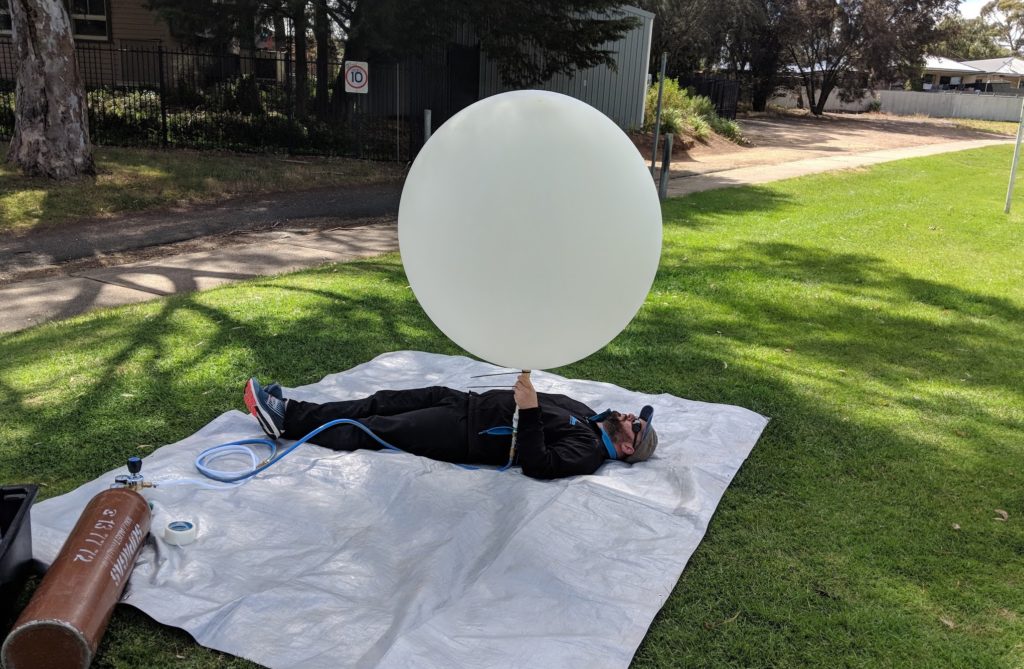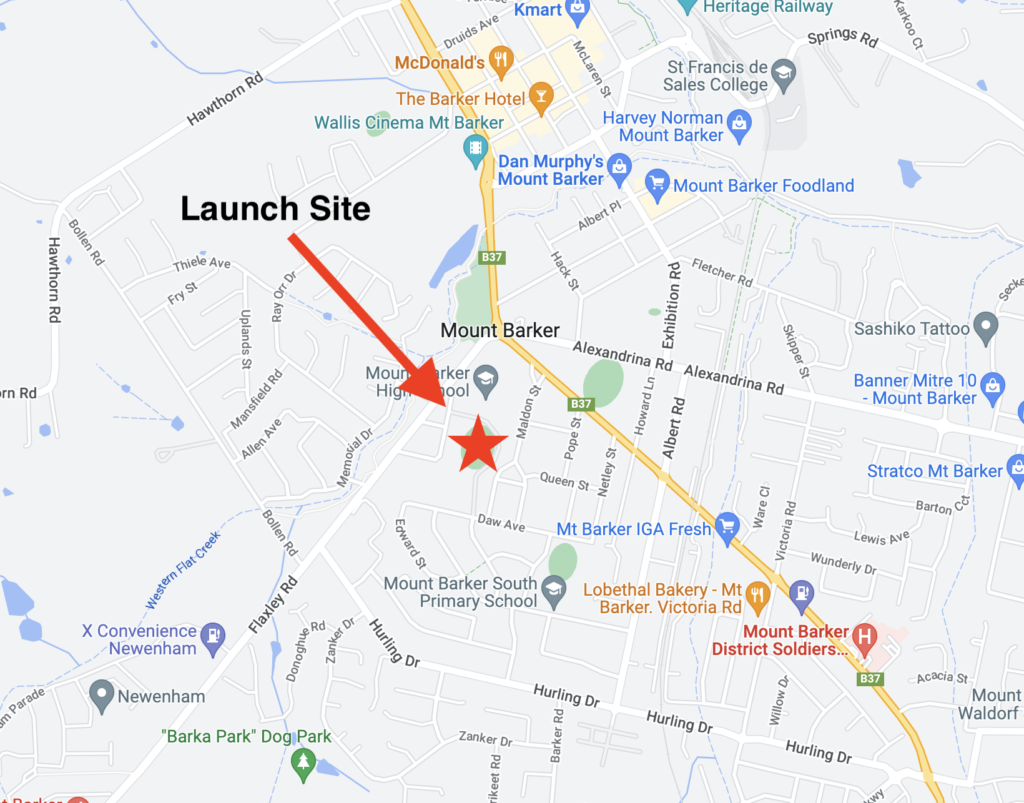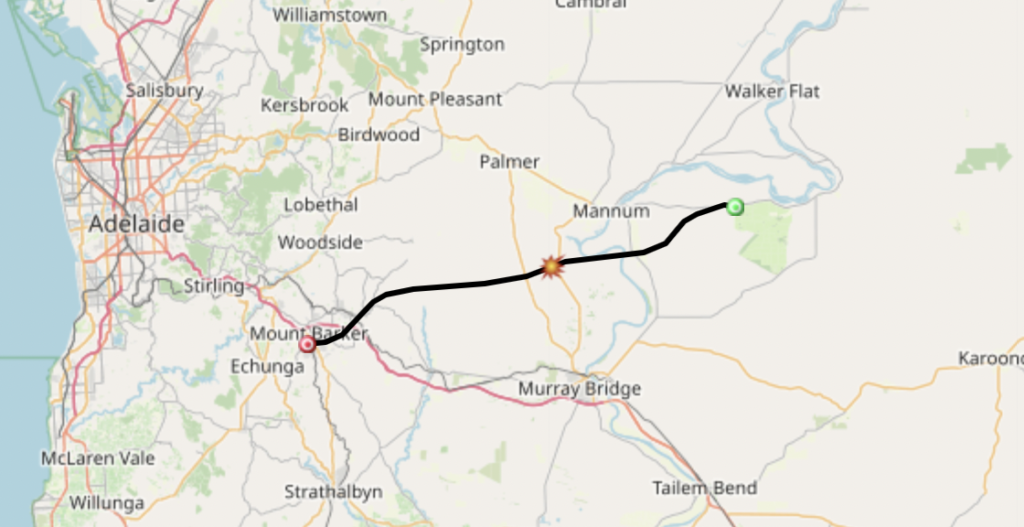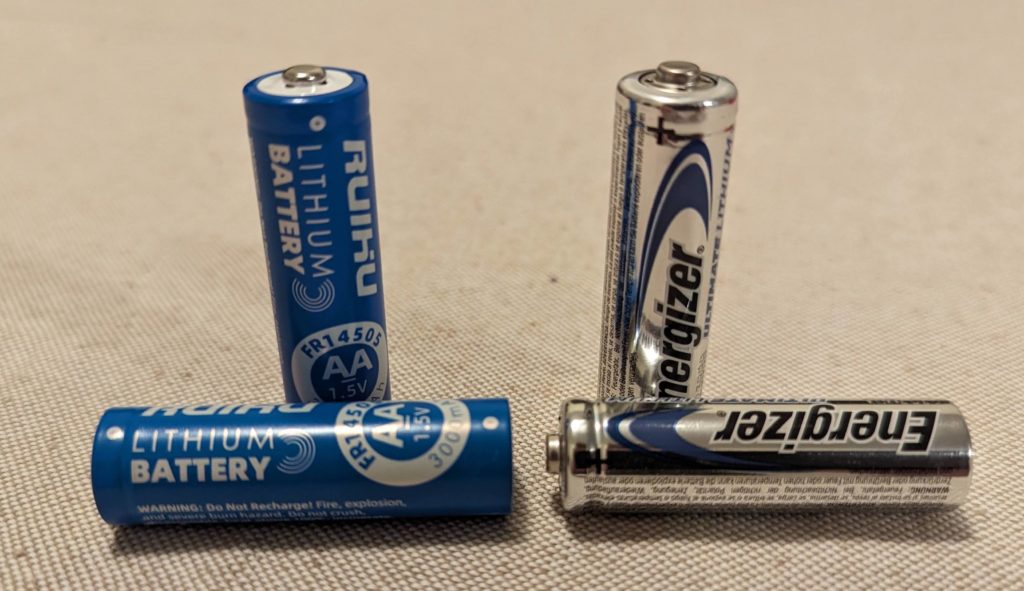This launch was a success, with the payload recovered close to the predicted landing area! A short writeup will be posted in the next few weeks, but for now the flight dashboard can be viewed here. The next Horus launch should be sometime in early July.
AREG’s High-Altitude Ballooning sub-group, Project Horus, is planning their next launch for Sunday the 26th of May, with a planned launch time of 10 AM ACST. If we have to scrub due to weather, the backup launch date is the 2nd of June.
UPDATE: This launch will be conducted from the Mt Barker High School Oval.
This launch is currently planned to be performed from the Mt Barker High School Oval, which is accessible from Stephenson Street, Mt Barker.
The launch team will be arriving on site from around 9:00-9:30 AM. Visitors are welcome!
This will be one of the smallest launches we’ve done in a while, with the payload mass for this flight totalling under 300g, and currently including:
- Primary Horus Binary telemetry on 434.200 MHz
- Experimental Horus Binary payload, using a different battery brand, on 434.210 MHz
- TheThingsNetwork tracking payload, using the AU915 band-plan.
During the flight, all the payloads can be tracked lived on the SondeHub-Amateur tracker here!
There will also be a live dashboard showing telemetry from the flight, which is available here.
Primary Telemetry – Horus Binary 434.200 MHz – HORUS-V2
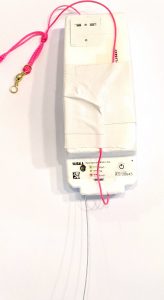 The primary tracking telemetry will be transmitted on 434.200 MHz using the Horus Binary 4FSK data mode. Amateurs in the Adelaide and Central SA region are also encouraged to get involved with the flight through receiving and uploading flight telemetry from our 70cm band tracking beacons. Every piece of telemetry data is valuable to the flight tracking and recovery teams so if you can help join the distributed receiver network to collect that data you will be making an important contribution to the project!
The primary tracking telemetry will be transmitted on 434.200 MHz using the Horus Binary 4FSK data mode. Amateurs in the Adelaide and Central SA region are also encouraged to get involved with the flight through receiving and uploading flight telemetry from our 70cm band tracking beacons. Every piece of telemetry data is valuable to the flight tracking and recovery teams so if you can help join the distributed receiver network to collect that data you will be making an important contribution to the project!
If you try receiving the telemetry from this flight, you’ll need a SSB-capable 70cm receiver (or a SDR), and the Horus-GUI telemetry decoder software. A brief guide on setting this up is available here: https://github.com/projecthorus/horusdemodlib/wiki/1.1-Horus-GUI-Reception-Guide-(Windows-Linux-OSX)
Listeners that already have Horus-GUI installed are encouraged to update to the latest version, which is available at this link.
Note that you will need to use a USB ‘dial’ frequency of 434.199 MHz for the 4FSK signal to be centred in your receiver passband and hence be decodable.
Experimental Battery Payload – Horus Binary 434.210 MHz – VK5ARG
An experimental payload will be transmitting on 434.210 MHz using the Horus Binary 4FSK data mode, and can be received in the same way as the primary tracking payload, with information above. For this payload you will need to use a USB ‘dial’ frequency of 434.209 MHz.
This payload will be using Riuhu FR1505 Lithium AA cells instead of the Energizer L91 cells that we usually fly. With suspiciously similar specifications, and at 50% of the price of Energizers, these are worth investigating! We’ll be looking closely at the voltage of this and the primary payload throughout the flight.
TheThingsNetwork Payload – 915 MHz LIPD Band
This flight will also fly a LoRaWAN payload built by Liam VK5ALG, this time relaying positions via TheThingsNetwork (TTN), a global Internet-of-Things network with hundreds of receiver gateways across Australia. You can find out more about how TheThingsNetwork works here.
The aim of this payload is to see what kind of range is possible on the 915 MHz band, and also test a new telemetry gateway which will forward TTN telemetry to the SondeHub-Amateur tracker.
Future Launches
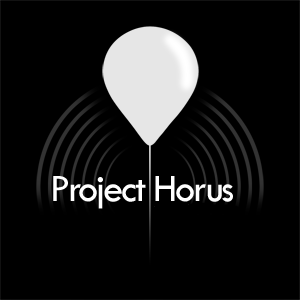 This year we hope to increase our launch cadence with more smaller launches, giving more club members (and the wider amateur radio community!) the opportunity to get involved with our flights. We’ve currently got a few ideas in the works, including:
This year we hope to increase our launch cadence with more smaller launches, giving more club members (and the wider amateur radio community!) the opportunity to get involved with our flights. We’ve currently got a few ideas in the works, including:
- A night launch with a modulated optical beacon.
- A return of the HQ Wenet payload
- 360˚ Video Camera
- Airborne Meshtastic node experiment
Stay tuned!

